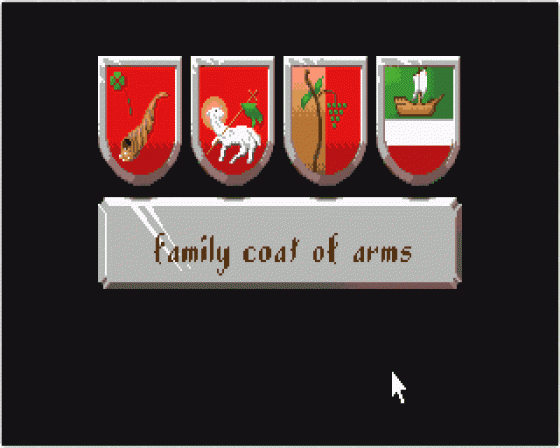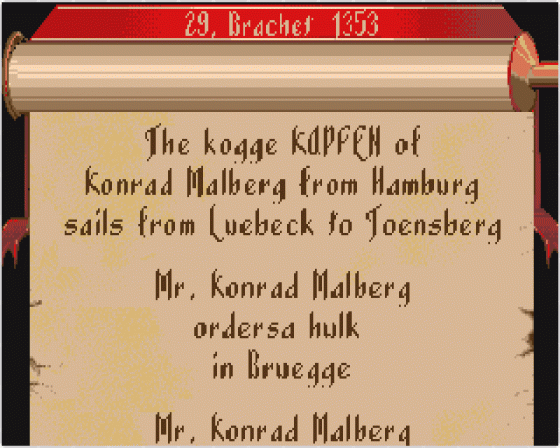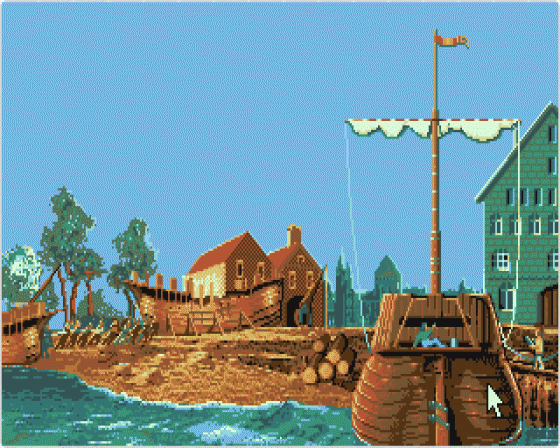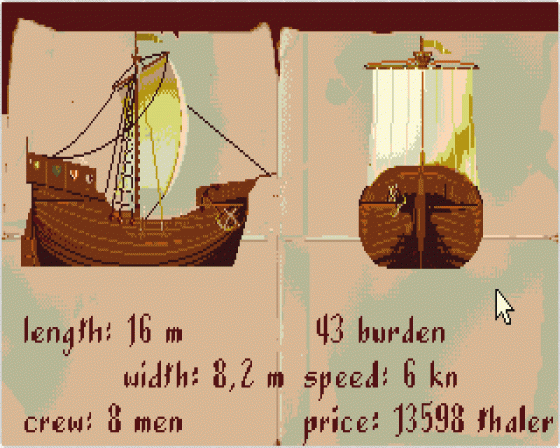
ST Format
 1st October 1993
1st October 1993
Categories: Review: Software
Author: Rob Mead
Publisher: Ascon
Machine: Atari ST
Published in ST Format #50
One of Germany's most successful ST games arrives, but has the epic trading adventure lost something in the translation? Rob Mead finds out...
The Patrician
So you think times are tough, eh? In the Middle Ages, they had to put up with piracy, the plague and barmaids with halitosis and black teeth. But they were happy because they had the Hanseatic League, one of the most powerful trading blocks the world has ever seen. It bought peace, prosperity and vast quantities of fish oil to the people of northern Europe and now you can join in.
The Patrician is a medieval trading simulation based on the exploits of the Hanseatic League during the 12th and 13th Centuries. You start off as a humble merchant armed with one poxy boat and no money, but by some careful trading, a lot of bribery and plenty of luck you're expected to rise to the position of Alderman - or Patrician - of the League and defend it from attack by pirates or the ruthless ambition of your rivals.
At the start of the game, you and up to three other human players are asked to choose from eight different merchant families and another either trading towns which you are to use as a trading base. The location of your home city is crucial for a variety of strategic and commerical reasons - for example, Hamburg and Lubeck are wealthy cities centrally located for easy access to all the League's regions, while the strategically less-important town of Visby contains a lucrative supply of wool which enables you to get rich relatively quickly by dumping it in a region where such commodities are very thin on the ground.

Once you've chosen your city and named your first boat, it's time to take a trip to the moneylender so you can raise some capital for your first voyage. Not surprisingly, people are reluctant to lend you money at the beginning of the game since your commercial worth is unproven and any capital they do let you borrow is likely to be at extortionate rates of interest. However, things improve as your success as merchant increases and you're able to borrow large sums at lower rates of interest. You can also start lending moneyto other merchants as your personal wealth accumulates. The next step is hiring a crew for your ship and buying the goods you wish to sell on to another city.
There are eighteen different commodities you can purchase - from wool to pig iron, from ale to crockery. The aim here is to buy goods as cheaply as you possibly can in one town and sell them for as much as possible in another. Unfortunately, you have no control over the purchase and sale prices of the goods you trade in - it's all fixed by the relative economic prosperity of the selected town. It's also important to divide the cargo of your ship between normal and luxury goods. If you concentrate your commercial activities exclusively in furs, wine and ale, for example, you could end up making the whole trading system collapse because the strategic towns are starved of essential goods.
Power, Corruption And Pies
As far as trading goes, that's basically it. You just have to travel the seas surrounding Northern Europe and visit each one of the sixteen principal trading towns, selling goods and boosting your profits. However, this is all just a means to an end - your real intention is to become a powerful political and economic figure who commands equal respect from both Church and State as well as enjoying the popular support of the humble townsfolk people. Naturally, this is a much harder objective to achieve.

One way of winning political influence is by gaining access to one of the many town guilds which local merchants have formed. There's a high price to pay financially, but this is more than compensated for by your increased status and the ability to snoop on your competitors' progress. Another way to achieve success is by sending ships to guard ports that are under threat from pirates or to form convoys which other merchants can join. More importantly, you can also throw feasts for the local peasants, give money to the poor and to the Church or even get married to a wealthy widow - all of these help no end to increase your social and political standing.
It's all plain sailing so far, isn't it? Erm, no. The gameplay really starts to get interesting when things go wrong. You can sail all the way from London to Novgorod only for your ship come under attack from bloodthirsty pirates or simply fall to pieces because you're failed to maintain it properly. Things can also go badly in the social-climbing stakes - you may start off as a political nobody, but a fumbled attempt at bribery or a disastrous wedding feast could turn you into a social pariah and a laughing stock. Even worse, a desperate scramble for cash by illegal arms trading can not only turn the Church against you, but renders you liable to blackmail and a possible court appearance where you can be stripped of all your possessions. Compared to this little lot, having your warehouse burn down with 100 tons of furs inside or your wife die of the plague is but a small price to pay.
Static Energy
The big problem for any trading game - and The Patrician is no exception - is how to make chuntering backwards and forwards, buying and selling goods as exciting as possible. Transarctica tried to do it with some spurious plot about rescuing the Earth from a nuclear winter and train battles, while old space adventures like Elite give you the chance to shoot it out with pirates in vector spaceships. The Patrician does neither. It doesn't even feature any animated sequences. Instead, you're offered a series of colourful static screens showing you different locations - the boat yard, and the Guildhall, for example. What's more, the screens are virtually identical whichever city you travel to - the harbours and bathhouses all look the same. The only flicker of graphical interest you get is where a plague or fire breaks out and you're presented with... a static picture of Death or a building on fire.

If you're after mad, brain-melting gameplay and saucy graphics, you *won't* find them in The Patrician. The static screens aren't that great looking and merely serve as functional menus enabling you to access the different game elements, even a digitized pic of Marilyn Monroe as a prospective bride fails to raise the blood temperature. There aren't any sound effects either - just some rather cheesy Medieval twangs from the ST's music chip. So what does it offer?
Primarily, The Patrician is an intellectual challenge. It's about keeping a fleet of boats on the go all at once and commissioning new ones. It's about making as much money as possible and then giving half of it away to the Church and the poor. It's about achieving the highest political office in the land when the odds are hopelessly stacked against you.
This is a perfect game for wannabe managers and, with up to three other human players all sitting round your ST at once, soon turns into a mental battle of wits against your pals as you all try to get one up on each other.

The game is controlled with a combination of point-and-click mouse controls or by a series of keyboard shortcuts. Each different element on the static screens can be clicked on to bring up another screen or sub-menu. The trading and moneylending screens enable you to click on a commodity and enter the amount to be bought or sold either by clicking on different parts of an abacus - which is a bit tedious, frankly - or by typing them in via the keyboard. To make matters worse, it's all too easy to lose the game in the early stages when your only ship is impounded because you've failed to pay your debts off in time. OK, so it's your fault, but even if you have a lot of money already stashed away you're not given the option to release the ship. You're sent to the Start menu and made to being all over again.
However, the inclusion of Quick Game and Practice options is a mark in The Patrician's favour and you can save the game as many times as you like. Best of all, your can copy the game to your hard drive if you own one and eliminate all those tedious disk swaps.
Verdict
Bit of a weird one, this. There's no running, jumping or blasting to be done, precious little animation and no sound effects - if your idea of a great ST game is arcade action and fun, fun, fun then you are going to be sorely disappointed.
However, The Patrician does hold a very tangible grip on you as you try to balance all the disparate elements - trading, electioneering, treachery, blackmail and bribery - which go to make up the game.
This trading sim demands a great deal of patience, time and effort from you as a gamesplayer - there's no point giving up the first time your strategy falls apart, you have to keep trying. It all depends whether you want to.
Highs
- The Patrician is a gigantic trading adventure with colourful graphics and absorbing gameplay.
Lows
- It can take a long time to get anywhere and the whole thing is pretty humourless.
















